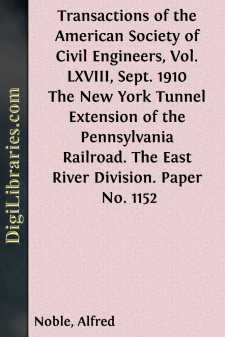Categories
- Antiques & Collectibles 13
- Architecture 36
- Art 48
- Bibles 22
- Biography & Autobiography 813
- Body, Mind & Spirit 142
- Business & Economics 28
- Children's Books 15
- Children's Fiction 12
- Computers 4
- Cooking 94
- Crafts & Hobbies 4
- Drama 346
- Education 46
- Family & Relationships 57
- Fiction 11828
- Games 19
- Gardening 17
- Health & Fitness 34
- History 1377
- House & Home 1
- Humor 147
- Juvenile Fiction 1873
- Juvenile Nonfiction 202
- Language Arts & Disciplines 88
- Law 16
- Literary Collections 686
- Literary Criticism 179
- Mathematics 13
- Medical 41
- Music 40
- Nature 179
- Non-Classifiable 1768
- Performing Arts 7
- Periodicals 1453
- Philosophy 64
- Photography 2
- Poetry 896
- Political Science 203
- Psychology 42
- Reference 154
- Religion 513
- Science 126
- Self-Help 84
- Social Science 81
- Sports & Recreation 34
- Study Aids 3
- Technology & Engineering 59
- Transportation 23
- Travel 463
- True Crime 29
Transactions of the American Society of Civil Engineers, Vol. LXVIII, Sept. 1910 The New York Tunnel Extension of the Pennsylvania Railroad. The East River Division. Paper No. 1152
by: Alfred Noble
Categories:
Description:
Excerpt
THE NEW YORK TUNNEL EXTENSION OF THE PENNSYLVANIA RAILROAD.
By Alfred Noble, Past-President, Am. Soc. C. E.
A general outline of the work included in this Division has been given by General C. W. Raymond, M. Am. Soc. C. E., in the first paper of the series. The few pages following are intended only as a note to connect his paper with the more detailed descriptions of the execution of the work, which will be supplied by the Resident Engineers in immediate charge.
Soon after the Company's project was made public, in the latter part of 1901, borings were begun in the East River, and a few weeks later in Manhattan and Long Island City. A preliminary base line was measured on the Manhattan side, and temporary transit stations were established on buildings from which all borings in the river were located. The river borings were all wash-borings made from a pile-driver boat. After the results were plotted on the map, contour lines were drawn to indicate the rock surface, and profiles along the tunnel lines were plotted from the contours; as the borings were preliminary to the final location of the tunnels, and in many cases at some distance from the tunnel lines, considerable divergence from the actual rock surface was expected, and realized in a few places, yet on the whole the agreement was very good. The borings revealed two depressions or channels where the rock surface passed below the grade of the projected tunnels, these depressions being separated by a rock reef which extends down stream from Blackwell's Island. In 32d and 33d Streets in Manhattan, borings were made from the river to the station site at intervals of about 100 ft., wash-borings and core-borings alternating. In Long Island City, where the tunnel lines were to pass diagonally under the passenger station building and passenger yard of the Long Island Railroad and under streets and private property, the arrangement of borings was less regular, although the alternation of wash-borings and core-borings was carried out as far as practicable. After the final location of the work, additional borings were made, particularly on shaft sites and also along the approaches and in the Sunnyside Yard, Long Island City.
A triangulation was carried across the river with a measured base on each side. It was impossible to measure directly between the extremities of either base. The bases were measured with 100-ft. steel tapes, supported every 20 ft., stretched with a uniform pull, and frequently compared with standardized tapes. On account of the crowded condition of the streets during the hours of daylight and evening, most of the work was done between 10 P. M. and 5 A. M. Similar measurements were made in the streets along the tunnel lines. Angle readings were repeated many times, as is usual in such work.
shows the triangulation, the street measurements being omitted.Levels were first transmitted across the river by simultaneous observations of the river surface; then by several repetitions, across Blackwell's Island and the narrow channels on each side, where the longest sights were about 1100 ft.; and, finally, by several lines through the tunnel of the East River Gas Company at 71st Street....


